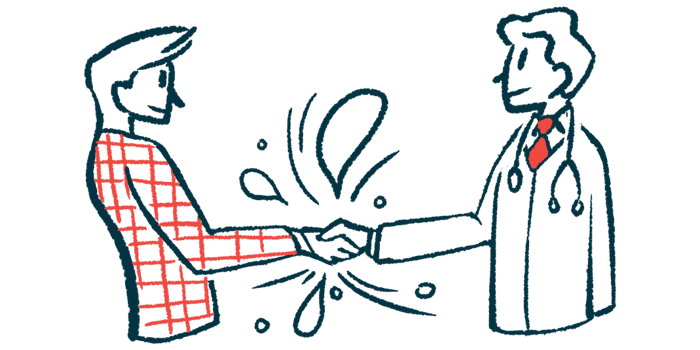Goal of new collaboration is novel non-viral gene therapy to treat CF
Partners to try to use airway stem cells for transplant into lungs

Moligo Technologies is teaming up with Nationwide Children’s Hospital on a new project to develop a non-viral gene therapy approach for treating cystic fibrosis (CF) and other diseases that affect the lungs.
Instead of using a modified virus to deliver a gene therapy into a patient’s body, the partners aim to modify airway stem cells in the lab to serve as a carrier. That would allow a healthy version of a gene to be delivered via the lungs as a treatment for CF or other lung diseases.
“We are extremely pleased to collaborate with Nationwide Children’s Hospital on this critical research,” Cosimo Ducani, PhD, CEO of Moligo, said in a company press release. The release noted that Moligo has a “patent-pending” technology that is “potentially suited as a non-viral delivery method in cell and gene therapies.”
Under the collaboration, Nationwide’s Sriram Vaidyanthathan, PhD, will be leading proof-of-concept laboratory tests using cells in dishes over the course of the next year. If the early results are successful, the researchers will then launch an additional study.
Non-viral gene therapy has potential to treat all CF patients
CF is caused by mutations in the gene CFTR. The basic idea behind gene therapy is to deliver a working version of this gene to cells in the body. Theoretically, this strategy could treat all people with CF regardless of the specific type of disease-causing mutation they carry.
“While significant advances have been made in treating cystic fibrosis, many patients with rare genetic mutations don’t benefit from current treatments. A gene therapy approach could treat more patients and, importantly, holds the potential for a permanent cure,” Ducani said.
Because many serious symptoms of CF are related to how the disease damages the lungs, delivering a healthy copy of the CFTR gene to lung cells in particular is seen as a goal for CF gene therapies. Experimental gene therapies designed to be inhaled into the lungs are now being tested in people with CF in clinical trials.
However, most gene therapies currently in development are designed to deliver their genetic payload using a viral vector — essentially, a virus that’s been modified to deliver a therapeutic gene instead of infecting cells. A particular type of virus, called adeno-associated virus or AAV, has been a popular choice for gene therapies because it’s easy to manipulate in a lab and doesn’t cause serious illness in people.
Using AAV as a viral vector in CF comes with a practical limitation, however: The CFTR gene itself is fairly large, but AAV particles are comparatively small. As a consequence, it can be difficult to physically fit the therapeutic gene into the viral vector.
“There are few options outside of AAV right now in the genome-editing field,” Vaidyanthathan said.
While significant advances have been made in treating cystic fibrosis, many patients with rare genetic mutations don’t benefit from current treatments. A gene therapy approach could treat more patients and, importantly, holds the potential for a permanent cure.
The new project aims to further an alternative, non-viral approach to CF gene therapy. In this approach, airway stem cells — specialized cells capable of growing into other kinds of lung cells — are modified in the lab to carry a healthy version of the CFTR gene. The cells are then transplanted into the lungs.
Moligo is developing technology that can produce long pieces of single-stranded DNA (ssDNA) at industrial scale, which can be used in this technique. Using ssDNA may improve editing efficiency because cells are less likely to mistake the therapeutic gene for an infection and destroy it, compared with the double-stranding DNA that’s normally found inside of cells.
“If we can successfully use ssDNA to insert large genes, such as CFTR, into airways, the possibilities are endless,” Vaidyanthathan said.
“Although the efficiency of editing and producing ssDNA capable of carrying long genes has been a challenge, Moligo’s ssDNA has several characteristics that make it a possible option – including its length, ability to be produced at scale, and the fact that it can be chemically modified to potentially improve the stability of the gene,” Vaidyanthathan said.
Ducani added that ssDNA could provide “a valuable, scalable alternative to current gene therapy approaches, particularly when the gene exceeds the packaging capacity of AAV.”








